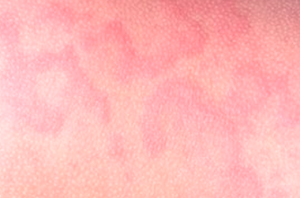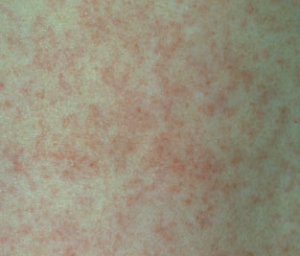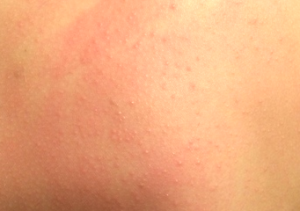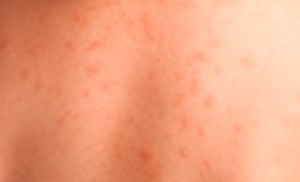In this condition, you get more allergic to some substances which are commonly present in the environment. Like any other allergies, this condition occurs when your immune system becomes over sensitive to some of the substances which are normal for other people and are commonly present in the environment.
This condition can also be responsible for causing rashes to your skin. It is one of the least discussed symptoms of hay fever. The cause of occurrence is the direct contact of skin to the allergic pollens.
Hay fever is a very disturbing allergy whose symptoms can adversely affect your daily routine and tasks. To prevent the distress associated with the disease, avoiding exposure to the allergic pollen is the best method one can opt for. Hay fever does not necessarily mean that you are allergic to hay, in fact hay particles do not cause any allergic reactions and the condition is not also associated with high temperatures or fever.
Hay fever rash – symptoms
The symptoms of this condition arise when the patient is exposed to hay pollens. Some of the commonly experienced symptoms include:
- Runny nose and constant nasal congestion
- Coughing
- Itchiness of nose, throat and roof of mouth
- Watery and itchy eyes
- Sinus heaviness and pressure
- Reduced taste sensation
- Sneezing
People in any age group can suffer from this condition, but the earliest episode is usually in the childhood or early adulthood. The degree of rashes and symptoms can alter with subsequent exposures and passing time. Over a long period of time, the symptoms and discomfort usually tend to reduce.
These symptoms may show aggravations on some particular seasons and can deteriorate in others and are mainly expressed during exposure to pollens, weeds or grass. All these things have some particular times of the year to flourish. However, people who are allergic to daily things like dust mites, pet dander, cockroaches; etc can witness the symptoms throughout the year.
Hay fever can also be associated with some complications if untreated and ignored for a longer period of time. Such complications include:
- They cause social complications like reduction in productivity of the individual. The patient may not be able to enjoy leisure activities completely and thus causes an overall reduction in the quality of life of the person.
- In children, hay fever rash may be responsible for triggering some middle ear infections.
- Hay fever can also cause disturbance in routine sleeping pattern and can thus result in poor sleep.
- Hay fever can also result in worsening of already existing asthma resulting in increased wheezing and sneezing
- As hay fever is also associated with sinus congestions and discomfort, prolonged sinus congestion can result in the development of sinusitis.
Causes
Hay fever occurs as a result of increased sensitivity of the body to some substances. The body identifies such substances as being harmful for the body and starts producing antibodies against it. At the time of first exposure, these substances are identified as harmful, and on subsequent exposure the body starts reacting against it. The occurrence of this immune response is responsible for the associated symptoms.
The triggers that can cause seasonal hay fevers include:
- Tree pollens in spring
- Ragweed pollen in fall season
- Grass pollens in summer and spring
- Fungi spore in cold weathers
The second type of the disease, which exists throughout the year include the commonly found things throughout the year. Such triggers include:
- Cockroaches and dust mites
- Dander, which include saliva and skin flakes from pets
- Commonly occurring indoor and outdoor fungi and molds’ pollens
Direct contact of the skin of sensitised individual to the allergic pollens can result in appearance of symptoms. The rash caused by hay fever has a typical appearance with bumps having clear demarcated borders, combined with itchiness and swelling of the lesion. The lesions may appear and disappear spontaneously. Another feature is the whitening of the rash on application of pressure.
They can also worsen an underlying case of atopic dermatitis. The bumpy rashes show association with itchiness of eyes, throat and mouth. Other conditions that may worsen hay fever include sensitivity to detergents, soaps, etc.
Treatment
The best way to subside the symptoms is to avoid exposure the allergens. However, this is not possible on a regular basis. Some over the counter medications can also be useful to subside the symptoms.
In cases of severe discomfort, some prescription medications are used like antihistamines, nasal corticosteroids and decongestants. Some advanced drugs include leukotriene modifier pills to reduce inflammation and chromolyn sodium which reduces the release of histamines.
Hay fever rash – Pictures



